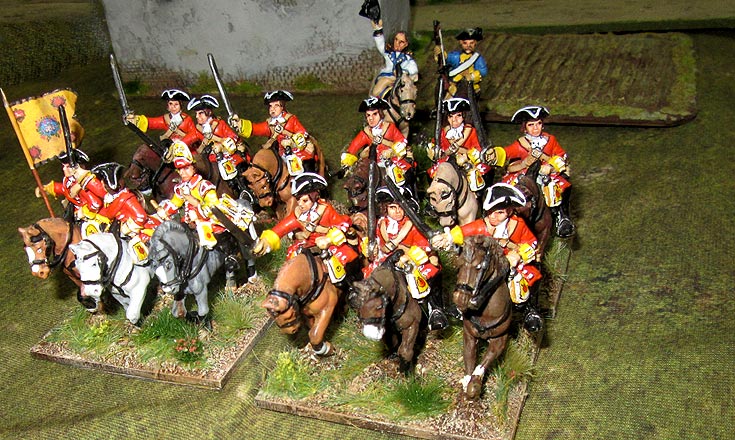
The Elseaue Crossing, 1759
12th December 2024, 6 Comments
The Seven Years War, Honours of War, 28mm
We needed our Seven Years War fix, so we staged this little game at the club this week. the idea – lifted and adapted from an old Charles Grant scenario – had the Allies trying to force a crossing of the River Else, a tributary of the Wesser. The ford near Kirchlengern led away to Minden, but blocking the way was a French force led by the Compte de Saint-Germain. So, the Allies, led by Prince Ferdinand of Brunswick, deployed for the attack. 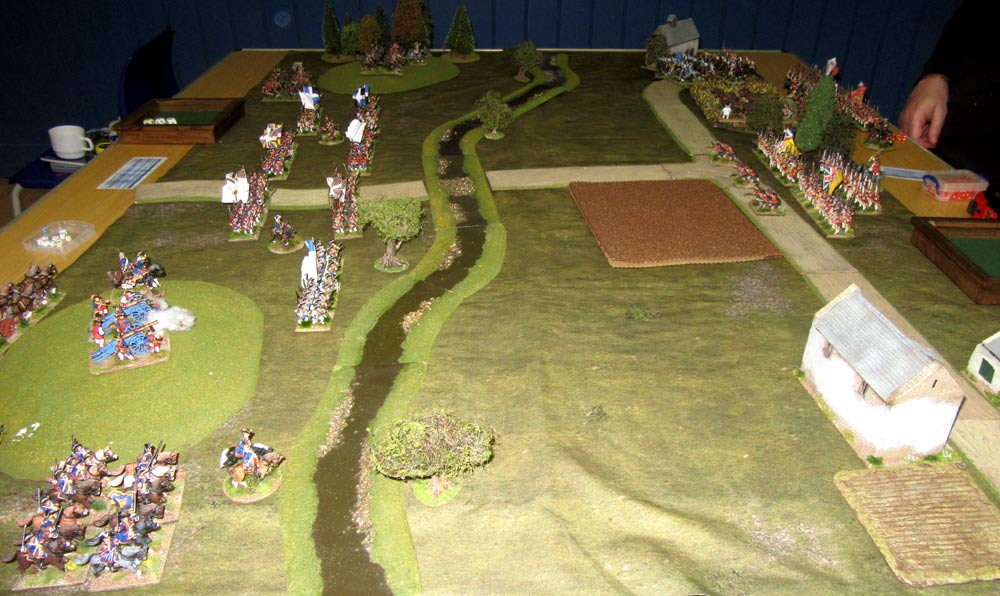 In this one, played on a 6×4 foot table, Sean opted to command the Allies, while I was left to lead the French. Both forces were roughly of divisional force, with seven or eight battalions a side, plus three regiments of cavalry and a gun battery. the Allies also had a detachment of Highland light infantry. There wasn’t going to be much in the way of tactical finesse with this one. the Allies though, had good quality troops and better leadership going for them.
In this one, played on a 6×4 foot table, Sean opted to command the Allies, while I was left to lead the French. Both forces were roughly of divisional force, with seven or eight battalions a side, plus three regiments of cavalry and a gun battery. the Allies also had a detachment of Highland light infantry. There wasn’t going to be much in the way of tactical finesse with this one. the Allies though, had good quality troops and better leadership going for them. 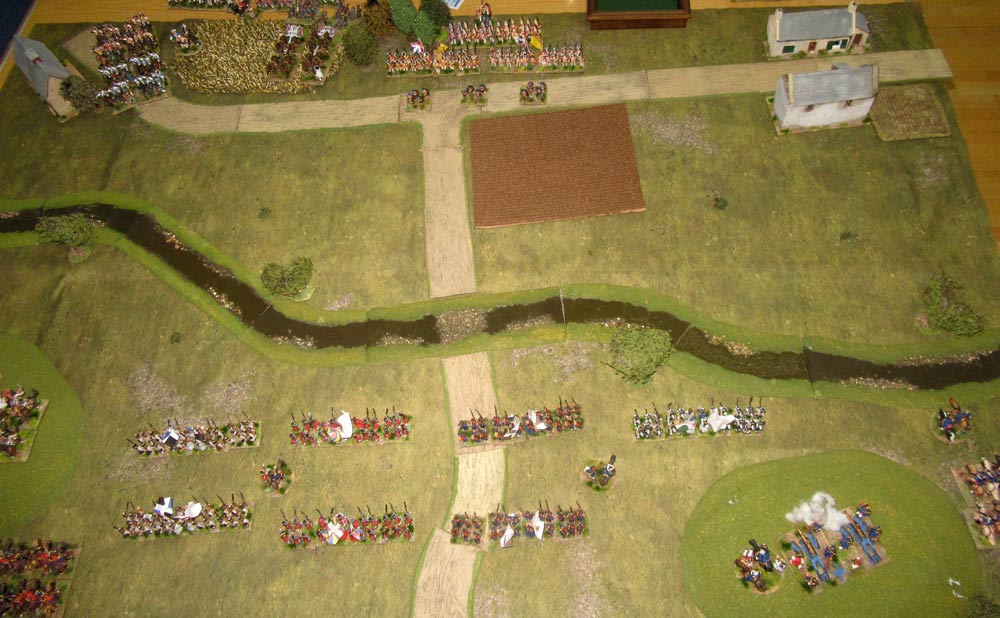 Sean decided he would lead off with General Waldengrave’s brigade, a force of three British battalions – one of them grenadiers, supported by a battery of heavy guns and a battalion of Keith’s Highlanders. Supporting them on their left was a German brigade led by General von Scheele, with two Hanovarian and two Hessian battalions, one of the latter being grenadiers. As for the cavalry, one British regiment was on the left, and two Hessian ones on the right.
Sean decided he would lead off with General Waldengrave’s brigade, a force of three British battalions – one of them grenadiers, supported by a battery of heavy guns and a battalion of Keith’s Highlanders. Supporting them on their left was a German brigade led by General von Scheele, with two Hanovarian and two Hessian battalions, one of the latter being grenadiers. As for the cavalry, one British regiment was on the left, and two Hessian ones on the right. 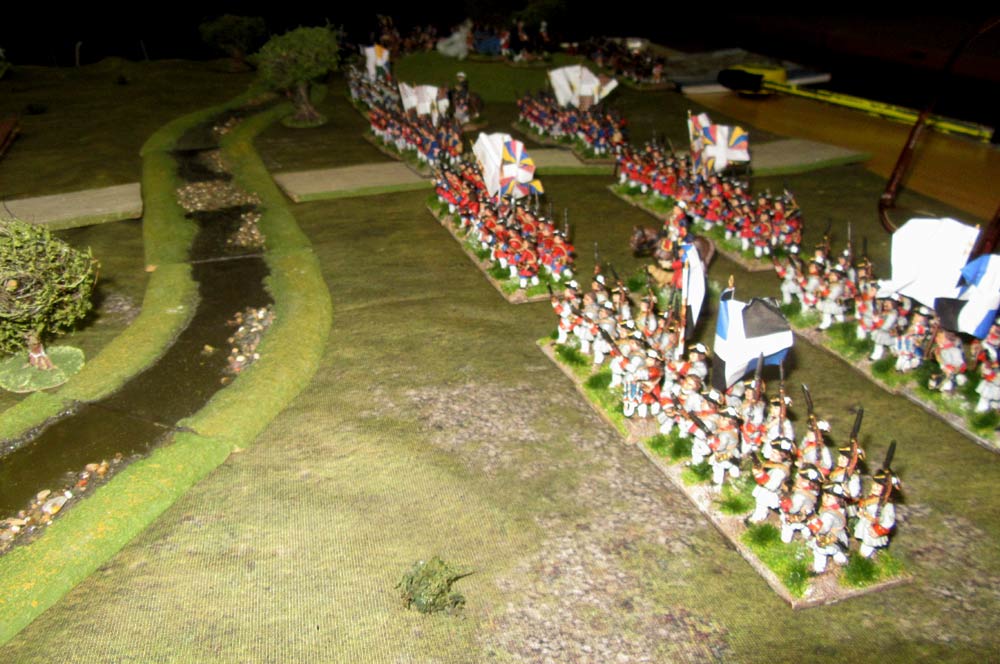 The trouble was, Waldengrave wasn’t very good at reading his orders. For three crucial turns, his command didn’t activate. So, the French guns had a few turns of firing to soften up the British. However, as the Highlanders were deployed in front of the line battalions, they soaked up most of the fire, but Sean quickly steadied their ranks. By then though, over on the British left, the Germans had become tired of waiting and had launched their own attack.
The trouble was, Waldengrave wasn’t very good at reading his orders. For three crucial turns, his command didn’t activate. So, the French guns had a few turns of firing to soften up the British. However, as the Highlanders were deployed in front of the line battalions, they soaked up most of the fire, but Sean quickly steadied their ranks. By then though, over on the British left, the Germans had become tired of waiting and had launched their own attack.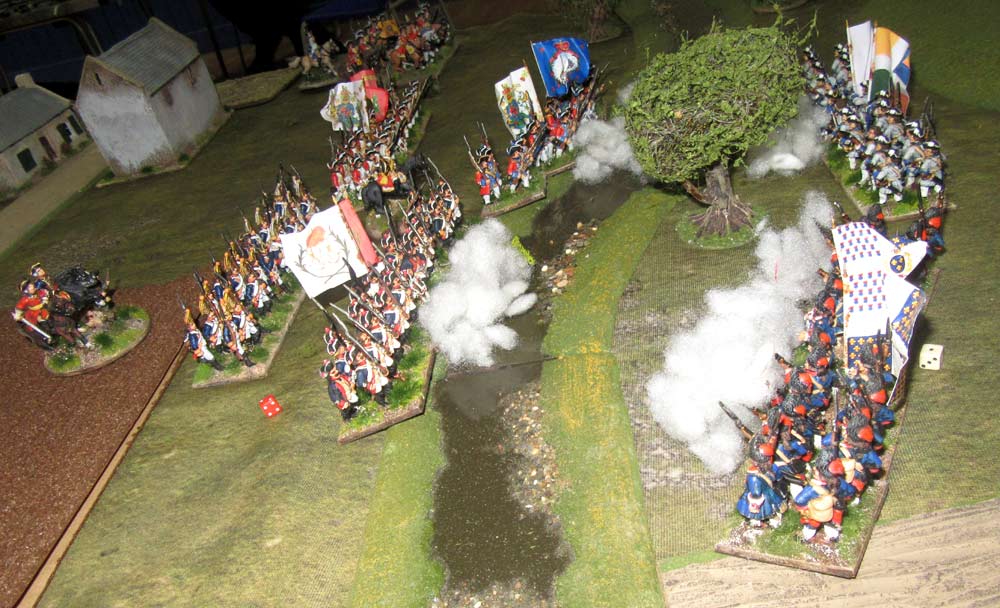 Von Scheele’s front line were met by a battalion of the Tourainne regt., and another of Grenadiers de France. The little river was fordable, but the Germans stopped at its southern bank, and opened fire. The French returned the compliment, and over two turns a battalion on each side was forced to retire, sporting four hits apiece. The Allies then brought up the fresh reserves, and repeated the process, this time targeting the French Grenadiers.
Von Scheele’s front line were met by a battalion of the Tourainne regt., and another of Grenadiers de France. The little river was fordable, but the Germans stopped at its southern bank, and opened fire. The French returned the compliment, and over two turns a battalion on each side was forced to retire, sporting four hits apiece. The Allies then brought up the fresh reserves, and repeated the process, this time targeting the French Grenadiers.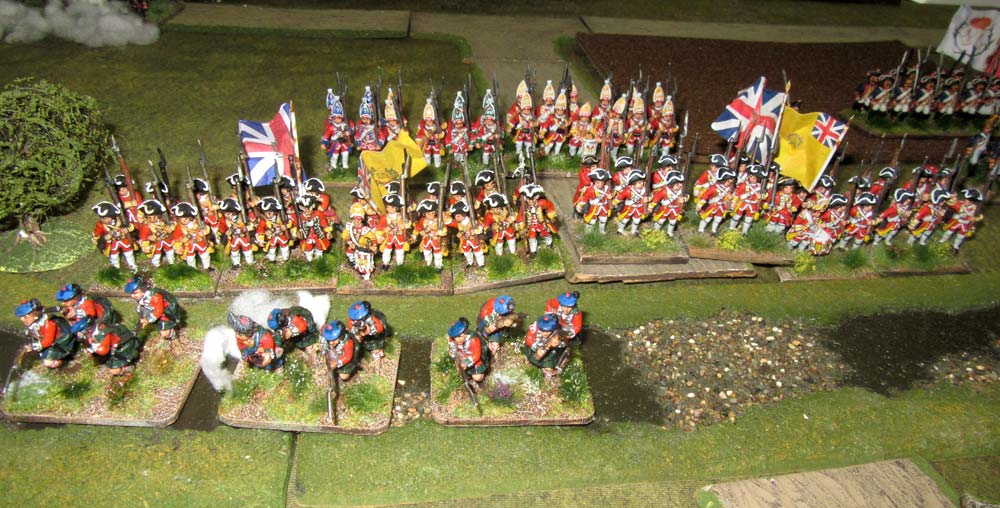 By then though, Waldengrave’s British had got their act together and advanced to the river, with the Highland skirmish screen leading the way. They looked splendid, but they could have turned up a few turns earlier, as by now the Germans had been enfiladed as they advanced across the stream, as the French had brought up a second grenadier unit. Facing the British then, were four battalions from the Lyonnais and Swiss De Planta regts., formed in two lines.
By then though, Waldengrave’s British had got their act together and advanced to the river, with the Highland skirmish screen leading the way. They looked splendid, but they could have turned up a few turns earlier, as by now the Germans had been enfiladed as they advanced across the stream, as the French had brought up a second grenadier unit. Facing the British then, were four battalions from the Lyonnais and Swiss De Planta regts., formed in two lines.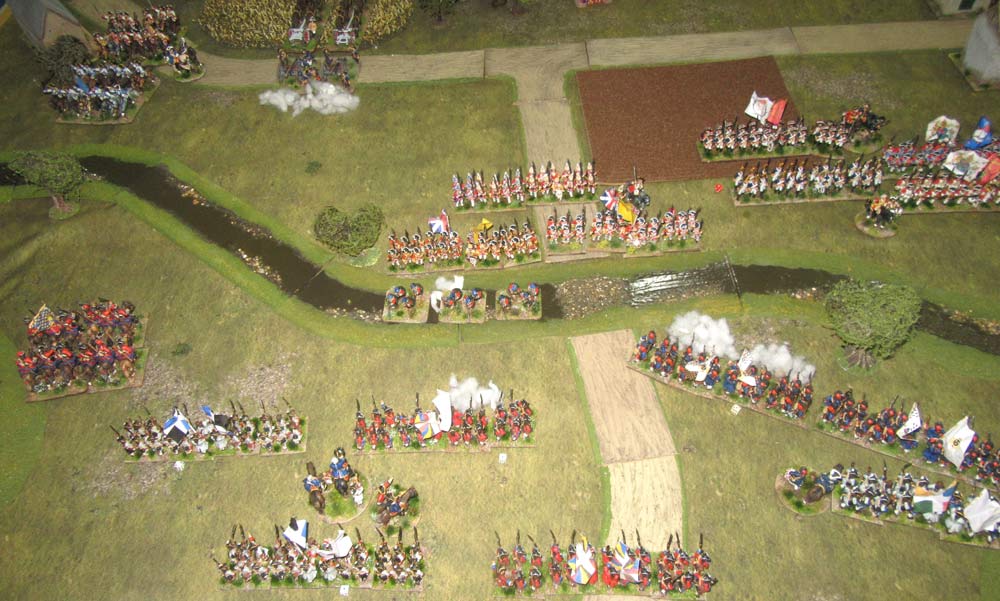 Another firefight erupted, but for some reason – actually more poor dice rolling – the Highlanders didn’t get out of the way, at least not until they were forced back by concentrated enemy fire. This delayed the British advance, at the same time as the German brigade pulled back a bit, to allow some of their ‘hits’ to be rallied off. Throughout the ensuing lull the French guns pounded away, while the British ones didn’t achieve very much at all.
Another firefight erupted, but for some reason – actually more poor dice rolling – the Highlanders didn’t get out of the way, at least not until they were forced back by concentrated enemy fire. This delayed the British advance, at the same time as the German brigade pulled back a bit, to allow some of their ‘hits’ to be rallied off. Throughout the ensuing lull the French guns pounded away, while the British ones didn’t achieve very much at all. 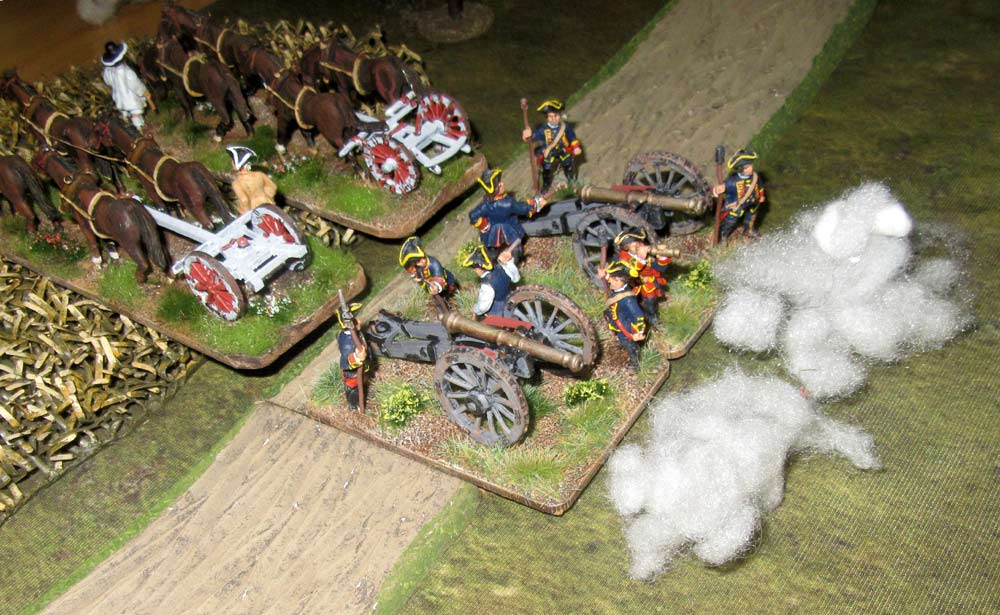 By this stage, in most games, both sides would have launched their cavalry into the fray. Sean though, held them back, waiting for the right moment – when the French infantry were fully engaged. the French certainly didn’t want to attack, as for the most part they were outclassed – and fighting units across a steam leaves the attacker at a disadvantage. So, the infantry fought on, with both British and German brigades attacking simultaneously.
By this stage, in most games, both sides would have launched their cavalry into the fray. Sean though, held them back, waiting for the right moment – when the French infantry were fully engaged. the French certainly didn’t want to attack, as for the most part they were outclassed – and fighting units across a steam leaves the attacker at a disadvantage. So, the infantry fought on, with both British and German brigades attacking simultaneously.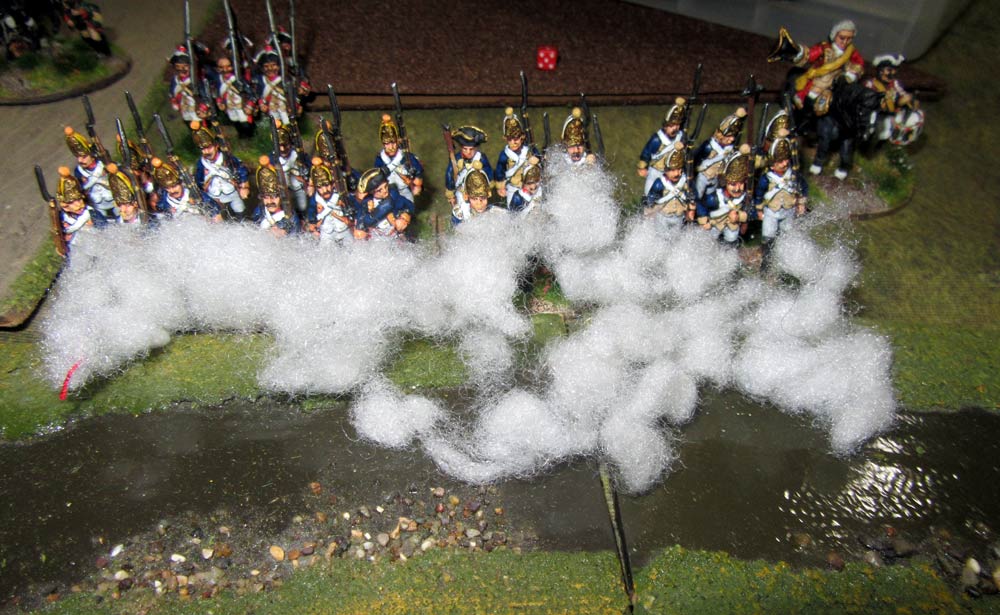 The Hessian grenadiers (above) routed the Tourainne battalion, but the Grenadiers de France stood their ground, while the guns, having their line of fire blocked by the French infantry, began shooting at the Inniskilling Dragoons on the far right of the French line. They would have charged across the stream at this point, but a lucky hit or two saw the Irish horsemen retiring to recover. On the French left though, the other group of cavalry finally got moving.
The Hessian grenadiers (above) routed the Tourainne battalion, but the Grenadiers de France stood their ground, while the guns, having their line of fire blocked by the French infantry, began shooting at the Inniskilling Dragoons on the far right of the French line. They would have charged across the stream at this point, but a lucky hit or two saw the Irish horsemen retiring to recover. On the French left though, the other group of cavalry finally got moving. 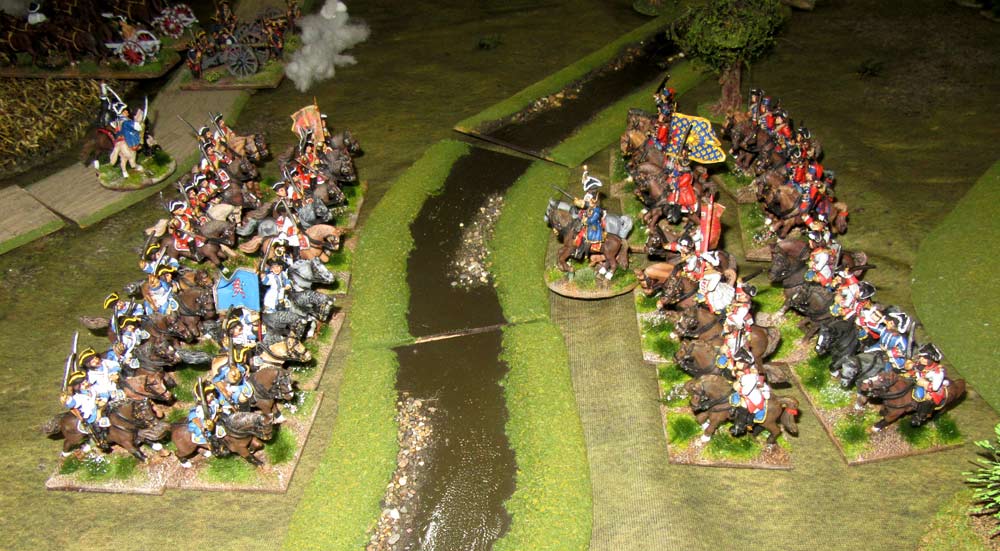 The Hessian horse advanced to the stream, and began crossing. At that point the French cavalry advanced too, and the two sides stopped, waiting for the other side to make the first move. Afterwards Sean told me he would have charged at that point, were it not to two turns of lousy activation rolls. The Allied cavalry then, stayed where they were. With the inferior French declining to charge either, the two sides just faced each other off.
The Hessian horse advanced to the stream, and began crossing. At that point the French cavalry advanced too, and the two sides stopped, waiting for the other side to make the first move. Afterwards Sean told me he would have charged at that point, were it not to two turns of lousy activation rolls. The Allied cavalry then, stayed where they were. With the inferior French declining to charge either, the two sides just faced each other off.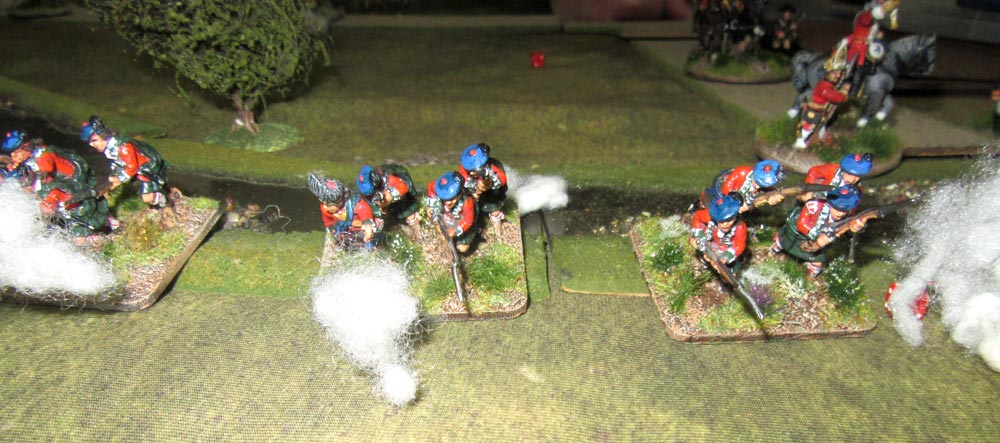 By now though, it was clear that the Allies weren’t going to force a crossing. In fact they never made it across the river. Both sides had suffered badly in the musketry. One French and one Hanovarian battalion had been routed, but many of the others had three or four ‘hits’ apiece, making them too weak to fight. So, Sean called off the attack. It was a good game, but quality hadn’t triumphed in an otherwise equal fight. Next time it’ll be different!
By now though, it was clear that the Allies weren’t going to force a crossing. In fact they never made it across the river. Both sides had suffered badly in the musketry. One French and one Hanovarian battalion had been routed, but many of the others had three or four ‘hits’ apiece, making them too weak to fight. So, Sean called off the attack. It was a good game, but quality hadn’t triumphed in an otherwise equal fight. Next time it’ll be different! 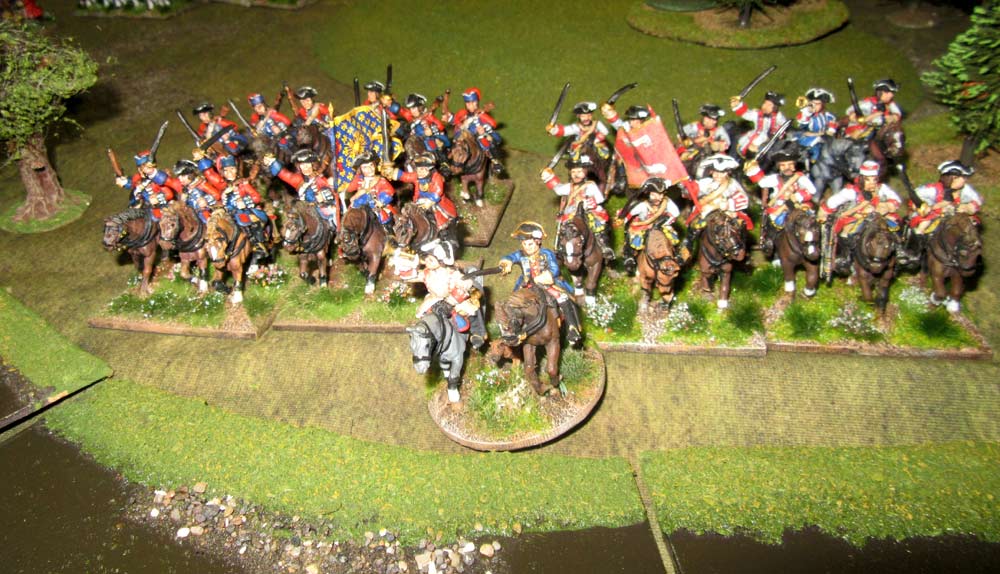
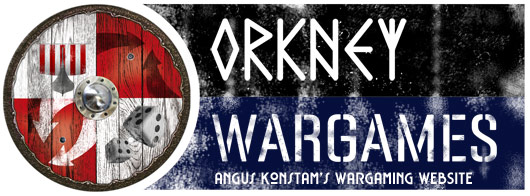
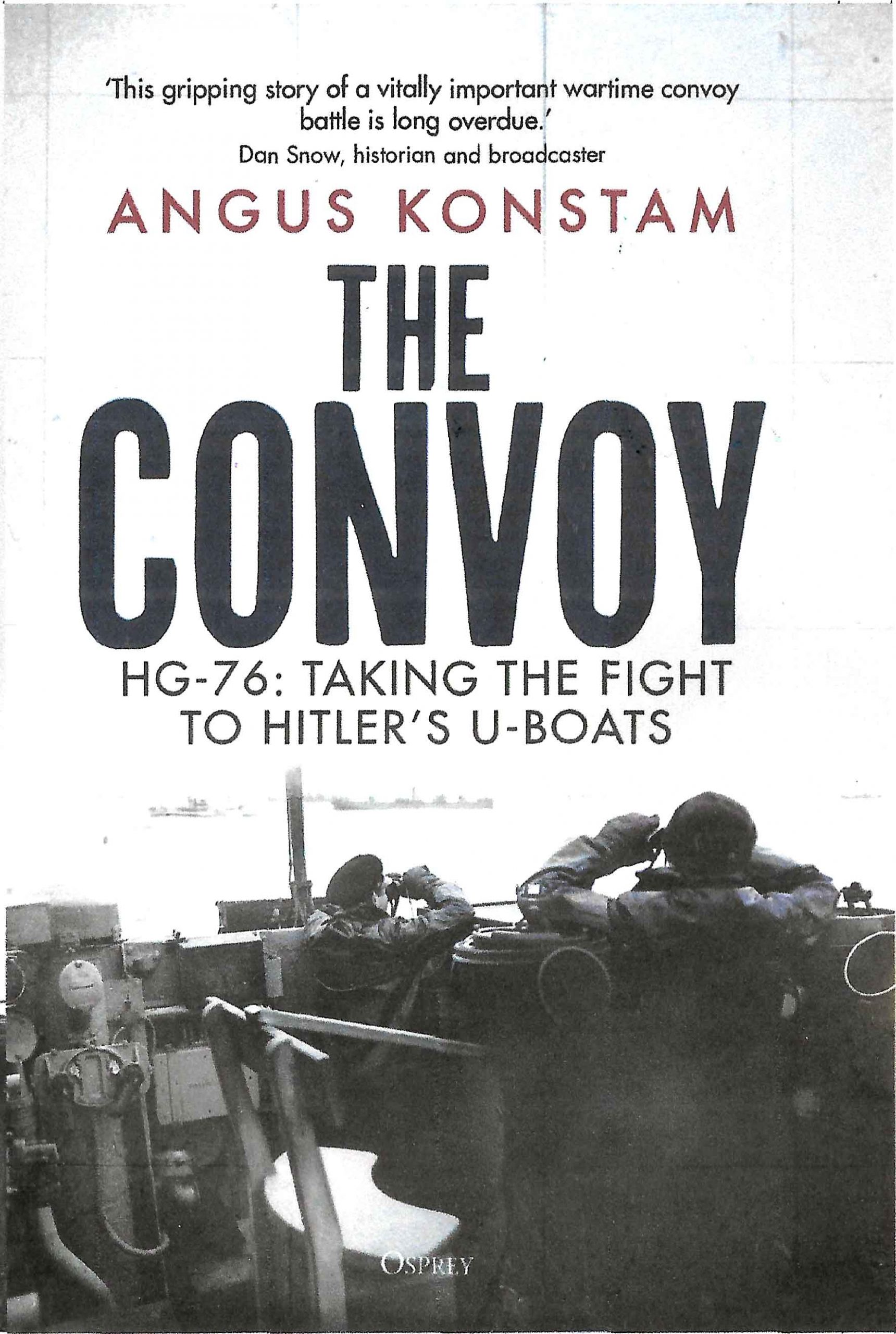
Quite right staying on your side of the bank, Angus. Like Sean, I’ve also found opposed river crossings a tough task for an attacker. You get slowed down wading the stream as you march towards the enemy line whilst all the time the enemy just stand there firing, re-loading, firing …. ouch! Good looking game, btw. Makes me think I should dig out my own SYW stuff and make my next game an Honours of War one.
Indeed David. To be fair I should have less troops, but we rolled for the French before deploying, and so a strong force was used. Still, by lowering troop quality a bit, the Allies had a good advantage on points.
Perhaps the allies should have had an extra brigade, to give them a chance of taking their objective?
Yes Peter, it was a tough challenge. We were trying to follow the force balance of the original scenario, but next time we should give the attackers more ‘clout’!
Very nice small game with my favorite rules for the period. Great report as always.
Thanks’Damnitz’. Next game will probably be bigger, but I like the problem solving aspect of some of these smaller scenarios.